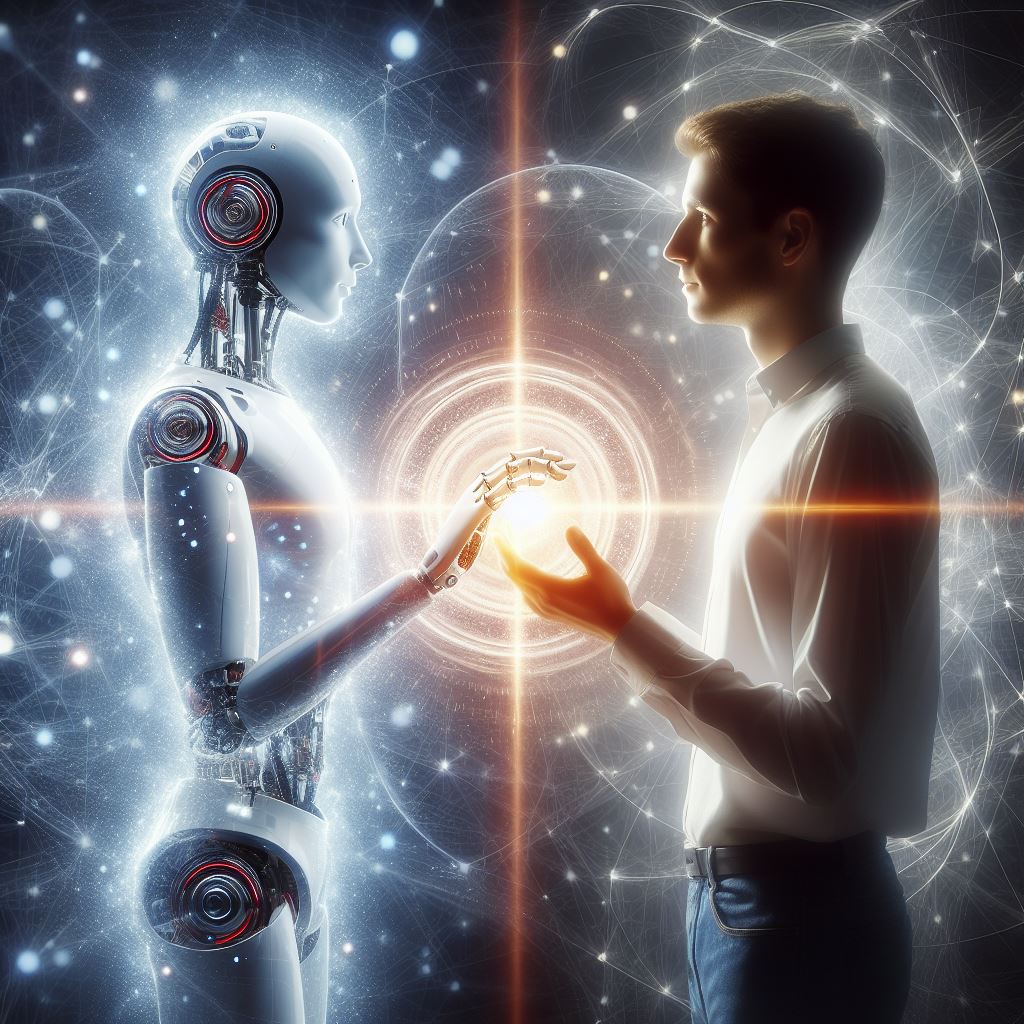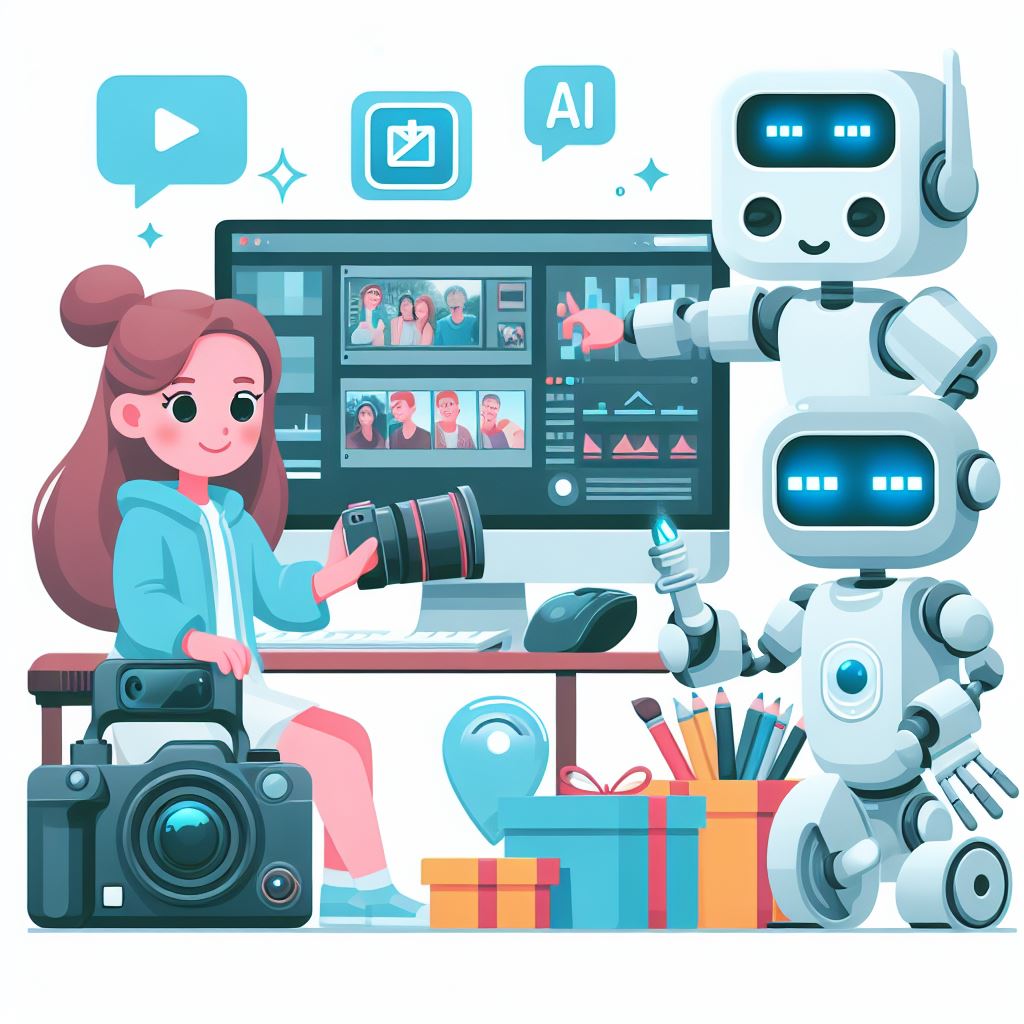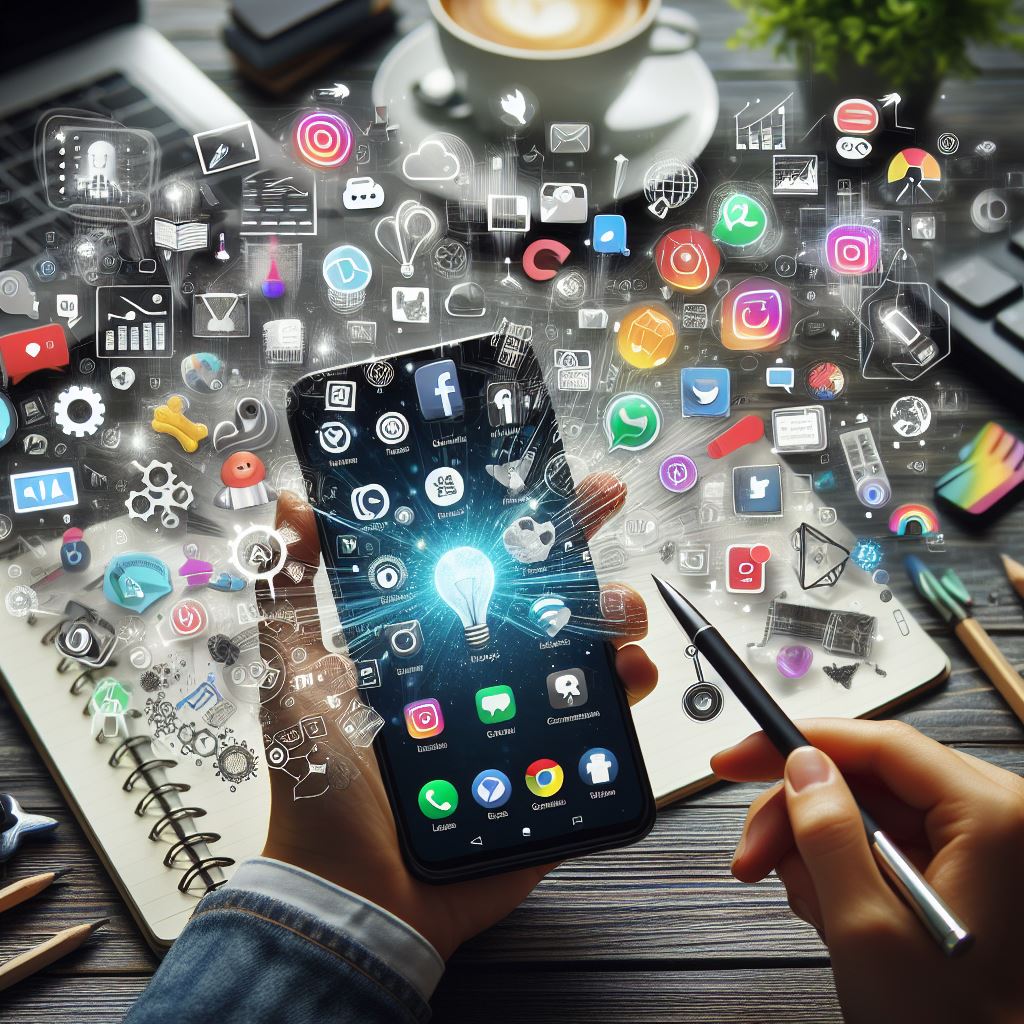
Creativity is often considered as a uniquely human trait, something that distinguishes us from other animals and machines. But what if we could use artificial intelligence (AI) to augment our own creativity, to inspire us, to challenge us, and to help us create new things that we could not have imagined before?
AI is a broad term that encompasses many different technologies, such as machine learning, natural language processing, computer vision, and more. Among these, one of the most relevant for creativity is generative models, which are AI systems that can learn from data and generate new data that resembles the original. For example, generative models can create realistic images, music, text, and even code, based on the examples that they have seen.
Generative models have many applications, such as data augmentation, image editing, style transfer, and more. But they can also be used as tools for enhancing human creativity, by providing us with novel ideas, feedback, and collaboration. In this blog, we will explore some of the ways that AI can enhance human creativity in different domains, such as art, music, and writing.
AI and Art
Art is one of the most expressive forms of human creativity, where we can use various media, such as painting, drawing, sculpture, photography, and more, to convey our emotions, thoughts, and visions. Art is also subjective, meaning that different people can have different interpretations and preferences for the same artwork. This makes art a challenging domain for AI, as there is no clear objective or metric to evaluate the quality or originality of an artwork.
However, this does not mean that AI cannot contribute to art. On the contrary, AI can be used as a source of inspiration, a tool for experimentation, and a partner for collaboration. For example, AI can generate new images that combine different styles, colors, and shapes, which can spark the imagination of human artists. AI can also help human artists to explore new possibilities, by allowing them to edit, transform, and enhance their artworks in ways that would be difficult or impossible to do manually. AI can also collaborate with human artists, by learning from their preferences, feedback, and style, and co-creating artworks that reflect both the human and the AI’s input.
Some examples of AI and art projects are:
- GANbreeder, a web app that allows users to create and explore images generated by a generative adversarial network (GAN), a type of generative model that can produce realistic images from random noise.
- DeepDream, a technique that uses a convolutional neural network (CNN), a type of machine learning model that can recognize and classify images, to generate psychedelic images that enhance the patterns and features that the model detects.
- Neural Style Transfer, a technique that uses a CNN to transfer the style of one image to another, creating a new image that combines the content of the source image and the style of the target image.
- Creative Adversarial Networks, a type of GAN that can generate novel and diverse images that deviate from the learned data distribution, aiming to capture the essence of human creativity.
- AICAN, a software program that can learn from a large dataset of artworks and generate new artworks that resemble the style and content of human artists, but also introduce novel elements that the program discovers.
AI and Music
Music is another form of human creativity, where we can use sounds, rhythms, melodies, and harmonies, to create compositions that can evoke emotions, moods, and stories. Music is also mathematical, meaning that there are rules and patterns that govern how music is structured and composed. This makes music a suitable domain for AI, as there are clear objectives and metrics to evaluate the quality and originality of a musical piece.
AI can be used to enhance human creativity in music, by providing us with new ideas, feedback, and collaboration. For example, AI can generate new melodies, chords, and rhythms, that can inspire human composers and musicians. AI can also help human composers and musicians to improve their skills, by providing them with feedback, suggestions, and corrections. AI can also collaborate with human composers and musicians, by learning from their preferences, feedback, and style, and co-creating musical pieces that reflect both the human and the AI’s input.
Some examples of AI and music projects are:
- Magenta, a research project by Google that explores the role of machine learning in the process of creating art and music, using various generative models and reinforcement learning techniques.
- Jukebox, a neural network that can generate music, including rudimentary singing, as raw audio in a variety of genres and artist styles, using a large dataset of songs and lyrics.
- Amper Music, a web app that allows users to create and customize original music using AI, by specifying the mood, style, and length of the music, and adjusting the instruments, tempo, and key.
- AIVA, an AI composer that can create original music for various purposes, such as films, games, and commercials, using a deep neural network that can learn from a large corpus of classical music.
- Duet, an interactive web app that allows users to play a duet with a recurrent neural network (RNN), a type of machine learning model that can learn from sequential data, such as music.
AI and Writing
Writing is another form of human creativity, where we can use words, sentences, and paragraphs, to create texts that can inform, persuade, entertain, and educate. Writing is also linguistic, meaning that there are rules and patterns that govern how language is used and understood. This makes writing a natural domain for AI, as there are clear objectives and metrics to evaluate the quality and originality of a text.
AI can be used to enhance human creativity in writing, by providing us with new ideas, feedback, and collaboration. For example, AI can generate new texts that can inspire human writers, such as headlines, summaries, stories, and poems. AI can also help human writers to improve their writing, by providing them with feedback, suggestions, and corrections, such as grammar, spelling, style, and tone. AI can also collaborate with human writers, by learning from their preferences, feedback, and style, and co-creating texts that reflect both the human and the AI’s input.
Some examples of AI and writing projects are:
- GPT-3, a deep neural network that can generate natural language texts on almost any topic, given some input, such as a prompt, a question, or a keyword, using a large dataset of texts from the internet.
- Hemingway, a web app that helps users to improve their writing, by highlighting and suggesting improvements for sentences that are hard to read, have grammatical errors, or use passive voice or adverbs.
- Talk to Transformer, a web app that allows users to see how a neural network, such as GPT-2 or GPT-3, completes their texts, given some input, such as a sentence, a paragraph, or a word.
- Botnik, a web app that allows users to create and edit texts using a predictive keyboard that is trained on various sources, such as books, movies, and tweets, and a voicebox that can generate texts in different styles and genres, such as horror, romance, and comedy.
- Deep TabNine, a code autocompletion tool that uses a deep neural network to suggest and complete code snippets, based on the context and the user’s coding style.
Conclusion
AI can enhance human creativity, by providing us with new ideas, feedback, and collaboration, in different domains, such as art, music, and writing. AI can also help us to explore new possibilities, experiment with new techniques, and discover new patterns, that we could not have done by ourselves. AI can also challenge us to improve our skills, to refine our style, and to express our vision, in ways that we could not have imagined before.
However, AI cannot replace human creativity, as it is ultimately a human endeavor, driven by human emotions, motivations, and values. AI can only assist us, but not dictate us, in our creative process. AI can only generate, but not create, new things, as it does not have the intention, the meaning, or the purpose, behind them. AI can only learn, but not understand, the rules and patterns of creativity, as it does not have the context, the culture, or the history, behind them.
Therefore, AI and human creativity are not in competition, but in collaboration, as they can complement each other, and create something that is greater than the sum of their parts. AI and human creativity are not mutually exclusive, but mutually inclusive, as they can benefit from each other, and enrich each other. AI and human creativity are not opposites, but partners, as they can work together, and create together.


Thanks for sharing. I read many of your blog posts, cool, your blog is very good.
Your point of view caught my eye and was very interesting. Thanks. I have a question for you.